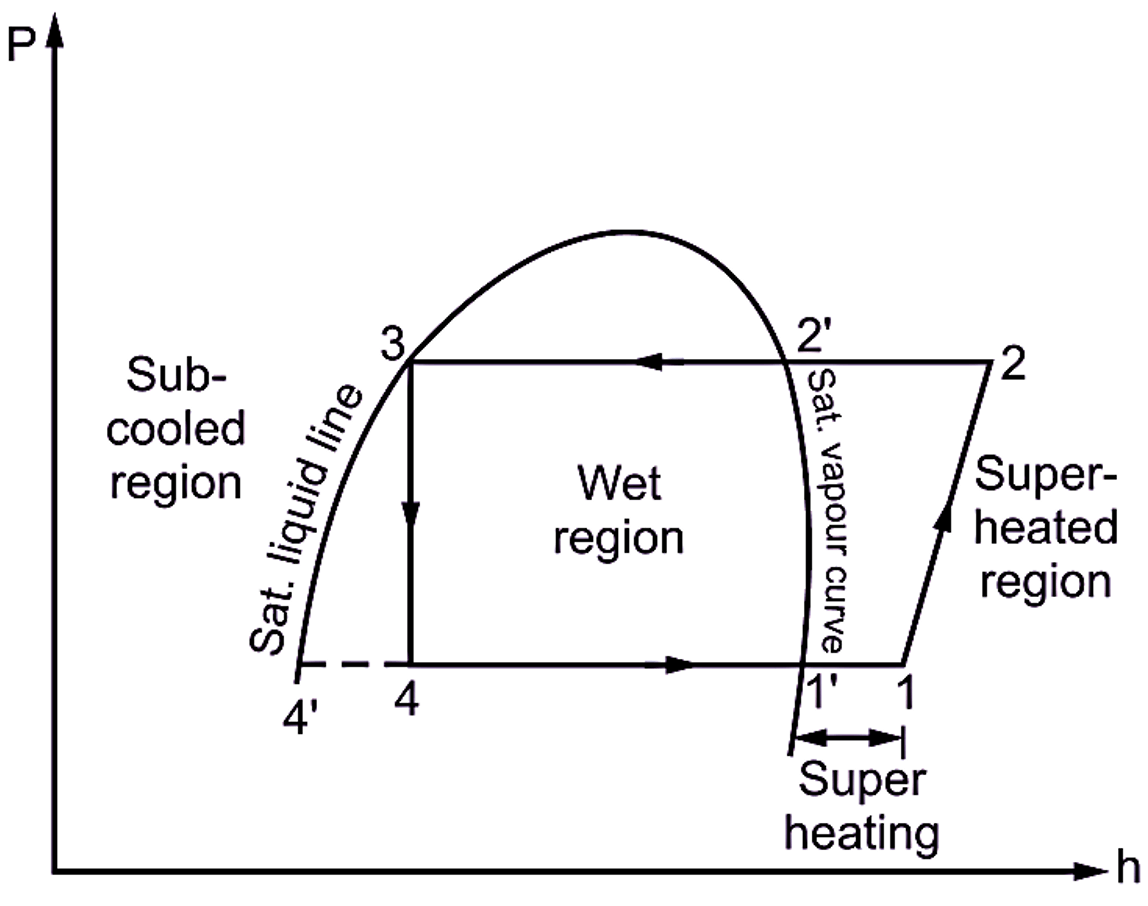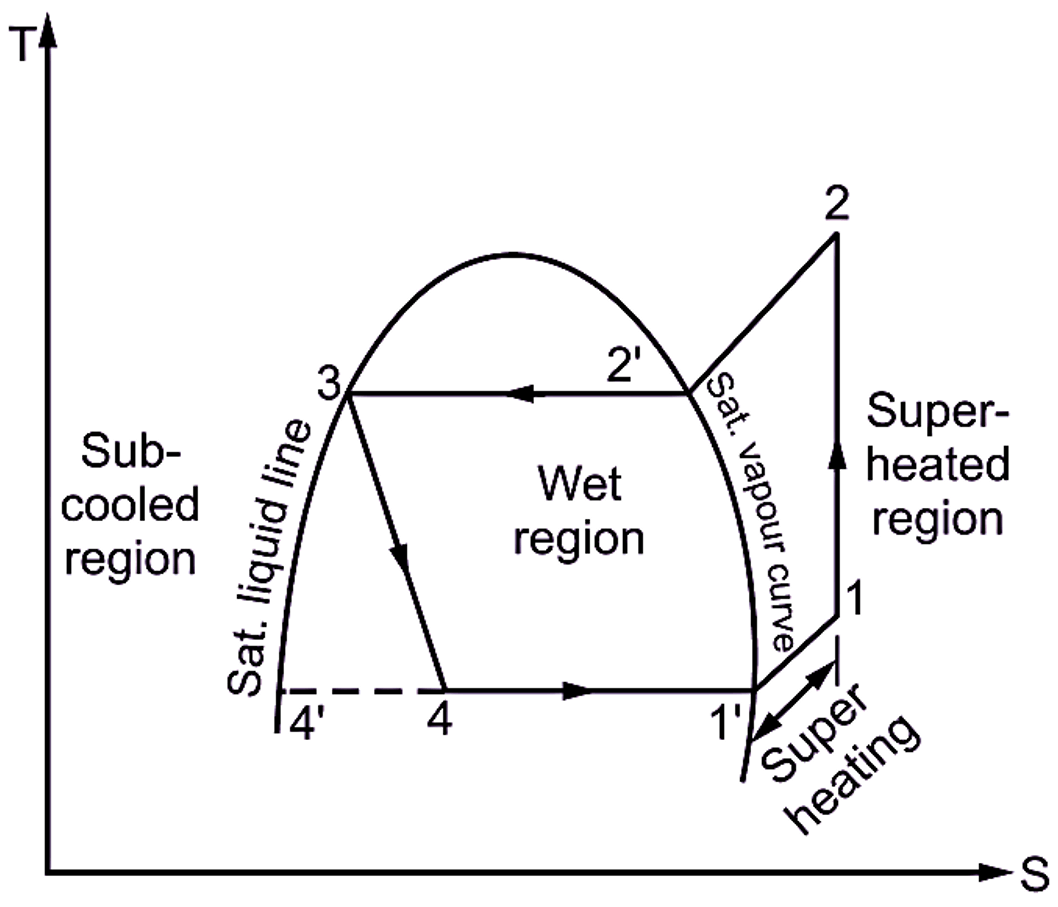Superheating is defined as, “the process of allowing vapour refrigerant to stay for some more time in evaporator, so that, it absorbs more heat and come out of evaporator in superheated form”. A vapour compression cycle with superheated vapour at the inlet of compressor is shown on T-s and P-h diagrams. Refer Fig. 1. In this cycle, the heat is absorbed or extracted in two stages, firstly, from point 4 to 1′ (latent heat) and secondly, from point 1′ to point 1 (sensible heat). The remaining cycle is the same. It is explained below. The evaporation of liquid refrigerant starts at point 4 and continues up to point 1′, where refrigerant becomes dry saturated vapour refrigerant and then this vapour refrigerant is superheated before entering the compressor (i.e. at in et of compressor represented by point 1). The process of superheating is represented by process 1′-1.


Fig. 1: Representation Of ‘Superheating’ on P — h and T – S charts
Necessity of Superheating
If liquid refrigerant along with the vapour refrigerant (i.e. wet vapour refrigerant) enters into compressor, then due to wet compression, lubricating oil will be washed off and considerable wear and tear of compressor parts will take place. This damages the compressor. If superheating is carried out, then dry compression will take place in compressor, preventing the damage and thereby, increasing life of compressor.
Effects of Superheating on coefficient of performance (COP)
We have,
COP = Refrigerating Effect / Work Done = ( h1 – h4 ) / ( h2 – h1)
Due to superheating, temperature of vapour refrigerant at suction side of compressor (i .e. compressor inlet) increases, thereby expanding in volume. Therefore, specific volume of refrigerant handled by compressor increases, which ultimately increases the required compressor power. Also due to superheating (i.e. by allowing liquid refrigerant to stay in evaporator for more time), refrigerating effect increases. It means that, both refrigerating effect and work done increases due to superheating, Since COP is ratio of refrigerating effect to work done, therefore, COP of system remains more or less constant. Therefore, superheating is not done to increase the refrigerating effect or COP, but it is done ‘to increase the life of compressor’.